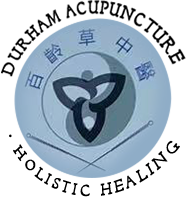Fibromyalgia (FM) was recognized as a true syndrome with the publication of the American College of Rheumatology (ACR) classification criteria in 1990, which was updated in 2010. Taking into account neuro-physiological evidence of pain, dysregulation as well as newer treatment options, these guidelines provide direction for optimal patient care and align with best clinical practice. Clinical challenge persists as symptoms are subjective, assessment is dependent entirely on patient report, no objective or laboratory test exists to confirm the diagnosis, and there is an absence of a gold standard of treatment [1].
With the pivotal symptom of pain, the syndrome of FM includes fatigue, non-restorative sleep, cognitive dysfunction, mood disorder, as well as variable somatic symptoms. Canadian prevalence rates are in the order of 2% – 3%, with females affected between 6 to 9 times more commonly than males. Although seen most commonly in middle-aged women, FM can also affect children, teenagers, and the elderlies. [1].
Fibromyalgia is a chronic stress or occupational induced condition in which a series of muscular spasms causes intermittent aches and pain, usually in the back, the trunk and/or the thighs. The pain is usually described as burning, throbbing, shooting, and stabbing. The pain and stiffness are often worse in the mornings than the other times of the day, and it may be accompanied by chronic headaches, strange sensations in the skin, insomnia, and irritable bowel syndrome. It seems to be triggered by cold weather conditions or negative emotional feelings. Fibromyalgia is most common in middle-aged and elderly people, and may occur more often in people with anxiety syndrome, and in those who spend time sitting in a cramped position. Depression is frequently part of the pictures as well. The most distinctive feature of fibromyalgia, however, is the existence of certain “tender points”- nine pairs of specific spots where the muscles are abnormally tender to the touch:
- Around the lower vertebra of the neck.
- At the insertion of the second rib.
- Around the upper part of the thigh bone.
- In the middle of the knee joint.
- In muscles connected to the base of the skull.
- In muscles of the neck and upper back.
- In muscles of the mid-back.
- On the side of the elbow.
- In the upper and outer muscles of the buttocks.
Fibromyalgia may cause a disturbance in the brain chemistry. Many people who develop fibromyalgia have a history of clinical depression. Other possible causes d that have been proposed include infection with some sort of virus, fungus, parasites, and anemia, chronic mercury poisoning, etc.… It is believed that fibromyalgia may be related to Chronic Fatigue Syndrome (CFS). Fibromyalgia is a complex condition with a range of potential causes, … and you have no other diagnosable medical condition that could explain the pain.
Traditional Chinese Medicine (TCM), however, has recognized that Fibromyalgia and CFS should be classified into the category of “Xu Sun”(Asthenia Diseases), and “Wu Lao Qi Shang”. The causes of these disorders, in terms of Chinese Medicine theory, are nothing more than irregular lifestyle, improper diet, overworking, impairment by extreme emotions and lack of exercise. In North America, living a busy and strenuous lifestyle such as working in a highly stressful environments are contributing key factors to the increased onset of Fibromyalgia and CFS.
In recent years, many cases of Fibromyalgia have improved with satisfactory results using acupuncture, cupping and Chinese herbal medications. The herbs like astragalus and echinacea enhance the immune function: Bai Shao with Gan Cao helps spasm in feet and hands, and Ginseng is useful as an overall tonic. The acupuncture and cupping help the spasm muscle relax, improve blood circulation in the body to build up energy, calm the mind, give the body and to recharge again.

